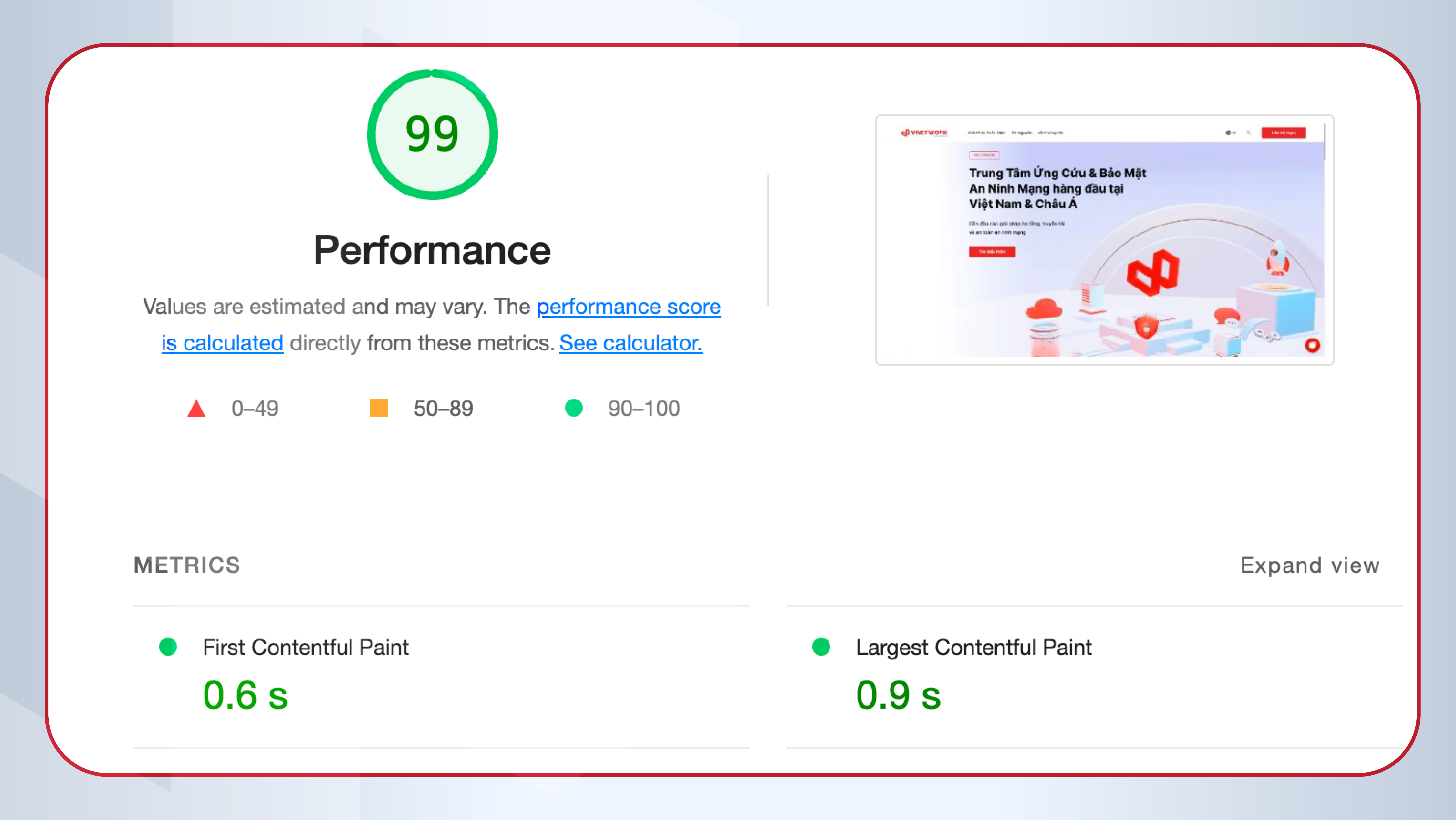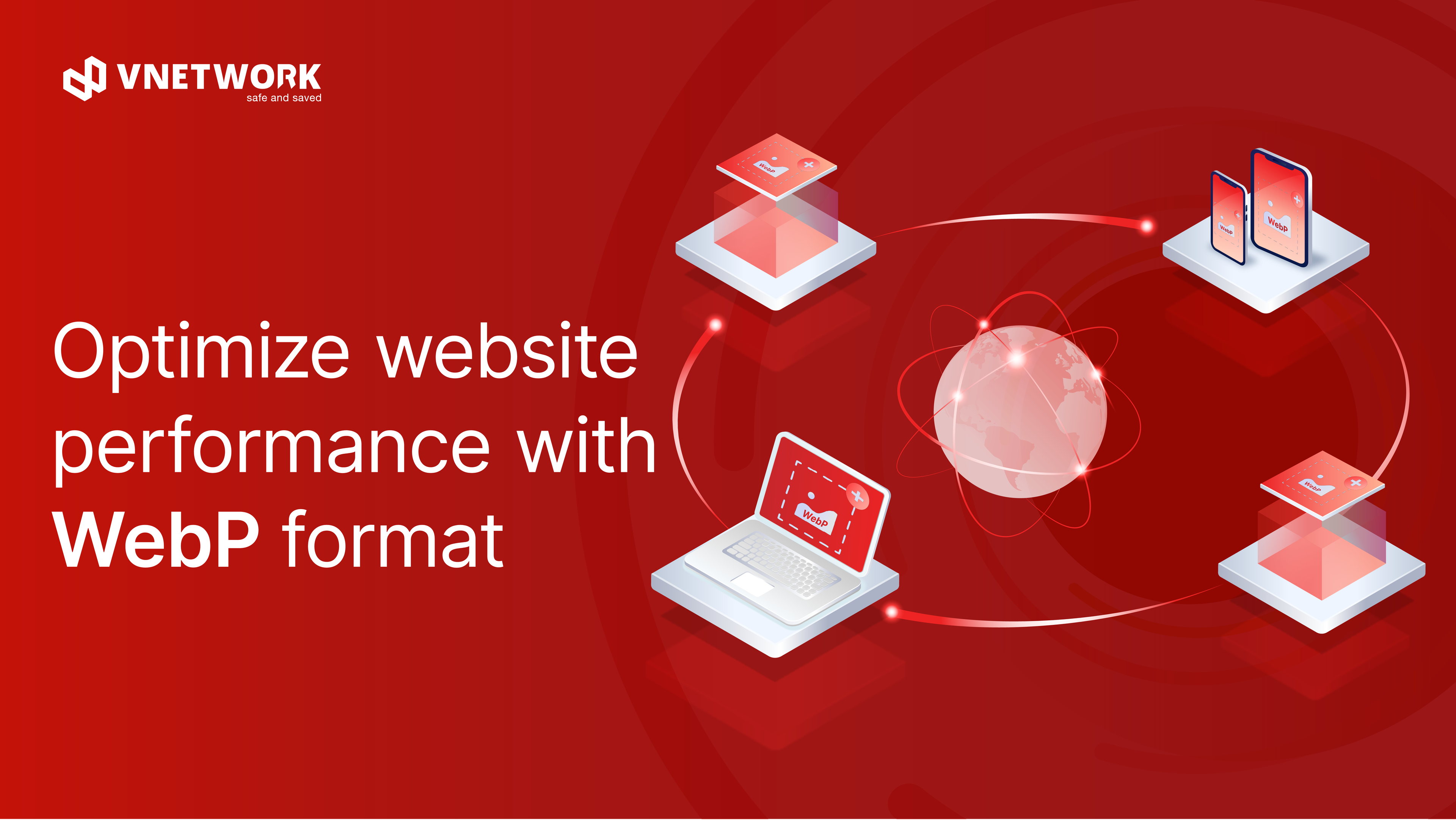What is WebP? Advantages of WebP format
WebP is a compressed image format developed by Google, the strength of WebP lies in the way it works. When compared to traditional image formats such as JPEG and PNG, WebP uses an intelligent compression algorithm to reduce file size while still maintaining comparable image quality. WebP uses lossy and lossless image compression algorithms to reduce file size. In lossy compression mode, WebP removes some unnecessary information in images to reduce size, creating smaller files while maintaining the same level of quality. For lossless compression mode, WebP keeps all image information intact, ensuring no data loss but will reduce file size compared to traditional formats.

WebP has a smaller capacity than JPG but the image quality is still equivalent
The advantage of WebP is that smaller file sizes help to reduce the time to wait for the website to load, reduce network bandwidth that needs to be used, and save data (important with customers who rely on data limit plans). This is especially important when accessing websites from mobile devices with small screens and slow network connections, or in places with low data transfer speeds. Besides, WebP also aids in displaying high-quality images with large resolution while keeping the file size small, helping to improve the overall user experience.
The benefits that WebP brings in the SEO process of businesses
WebP can positively influence the SEO (Search Engine Optimization) of customer websites. Here are some advantages that using WebP can affect SEO quality: Speed up the page-loading process With smaller file sizes than traditional image formats like JPEG and PNG, WebP helps reduce page load times. Fast page loading speed is an important factor in SEO because lightweight websites with faster loading speeds are one of the most important signals that search engines will think this is a quality website and it will be placed in the first position.

All Websites that have a high score from Google use the WebP image format to reduce the image file size
WebP can improve user experience
Ranking algorithms evaluate a website that loads quickly and is responsive as having a good user experience. Not only that, when customers visit a business's website and experience fast page loading speeds and almost instant responses, they tend to stay longer and will have more interaction with the content being displayed on the page. Not only does this help positively impact your client's SEO (like reducing bounce rates and increasing the average time users spend on the page), but it can also increase conversion rates, helping to generate more traffic and more potential future customers.
Reduce bandwidth usage
Because WebP has a smaller file size, using it on a customer's website can reduce the bandwidth needed (saving bandwidth for both the business and the customer). This can help save costs related to business bandwidth, save network data for business customers, and improve website performance (especially when customers are relying on 4G or 5G networks to access your websites). And above all, this is also a core factor that helps ranking algorithms decide the position of a business website on the search results table.
Compatible with mobile devices
More and more people are using mobile devices to access websites and applications, so optimizing websites for mobile devices is extremely important nowadays. WebP is supported on popular mobile browsers such as Google Chrome, Firefox, Safari,... to help speed up page loading and improve customers' mobile experience. This can have a positive effect on SEO progress, and Google and other search engines will value websites optimized for mobile devices.
In short, WebP has some benefits but also some disadvantages. It can save a lot of storage and can make your webpages way faster which increases the user experience. However, the format is not supported by every browser yet, since more browsers accept the format, it’s getting more and more popular. But VNETWORK customers don’t need to worry about compatibility issues because we have our own solution to solve those compatibility problems that will be mentioned below.
Some difficulties in accessing WebP format
In today's digital age, improving website loading speed is a critical factor that businesses need to prioritize and invest in. This significantly impacts user experience and retention. According to Forbes, 88% of internet users won't return to a slow-loading website. Furthermore, 47% of internet users expect webpage load times to be under 2 seconds, and if it takes longer, they might leave. This is why businesses need to invest in the ability to convert image formats to WebP to enhance their website's loading speed. However, when adopting this new image format, businesses may encounter some challenges during implementation, such as:
- Browser Support for WebP: Some web browsers do not support WebP or have limited support for this format. This can lead to display issues, as the images may not render correctly on browsers that do not support WebP.
- Conversion from Other Formats: If a business has stored a significant number of images in other formats like JPEG or PNG, converting them to WebP can be a time-consuming and manual process.
- Server-Side Detection for WebP Delivery: This is a significant challenge when adopting WebP. The reason for this challenge is that WebP is not supported by all web browsers. If a business wants to ensure that all its users can view its images, it needs to provide both WebP and traditional image formats. This requires server-side detection to deliver the appropriate image format based on the user's browser capabilities.
With WebP Delivery solution by VNETWORK, businesses can address these challenges and streamline the process of optimizing their websites using this image format.
Why did VNETWORK develop the feature to support image format conversion to WepP?
VNETWORK recognizes the challenges faced by businesses and the numerous advantages of WebP. Consequently, we have decided to integrate this feature into our VNCDN solution. Businesses can effortlessly enable the image format conversion to WebP, and from there, all the processes are automated. Customers can also rest assured about compatibility concerns, as VNCDN system is equipped with an algorithm for compatibility checks. If the user's browser supports WebP, VNCDN will deliver the images in WebP format; otherwise, it will provide the original image format.
In the future, VNETWORK experts will continue to research and integrate new useful, and outstanding technologies to develop new features in order to meet the needs of your businesses, also bringing more convenience for our VNETWORK customers during the service experience. Ensure VNETWORK customers can always access new and advanced technologies to help achieve our customer’s goals.
If your business is interested in experiencing VNETWORK's WebP Delivery solution, please reach out to us via our hotline: (028) 7306 8789 or contact@vnetwork.vn or send email to sales@vnetwork.vn for expert support and consultation.
